Photography in Morocco: Top 7 Spots
Photography Spots In Morocco
Unlike any other kind of media, photos have the ability to tell a narrative and keep memories alive. Taking a picture might take you to another location and time. It’s hardly surprising that as people traverse the world, tourists and travelers have started to prioritize photography. It is now possible to record what you see and feel like never before.
One of the best ways to find travel inspiration is by looking at images of stunning locations, and Morocco is right there with the best of them! One of the most beautiful nations I’ve ever been to is Morocco.
Morocco gives it all, whether you’re seeking for vivid colors or breathtaking landscape photos. Along with its extensive cultural and architectural past, the nation’s natural beauty will win you over.
What locations do you prioritize, though, with so many options? Plan a trip to Morocco and don’t forget to see these incredible photogenic locations. These are some of the greatest locations in Morocco for photographers, offering both small-town gems and expansive countryside views!
Table of Contents
1: Majestic Sahara Desert.
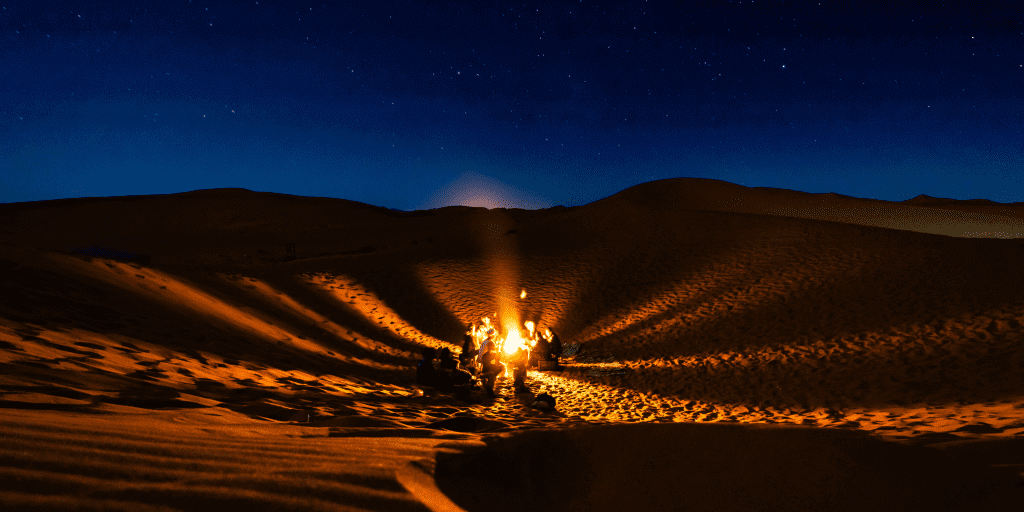
A photographer’s paradise, the Sahara Desert is a large area of unending sand dunes and dry vistas. The Sahara is unique as a location for photography because of the amazing variety in sand colors, a phenomena that turns this otherwise desolate landscape into a vivid canvas of hues.
The Sahara provides a constantly-changing and aesthetically intriguing experience, whether you are a professional photographer or an amateur enthusiast looking to capture the spirit of this natural beauty.
One of the key attractions of photographing the Sahara is the dynamic interplay of colors throughout the day. Depending on the time, the sand takes on hues of vibrant reds, oranges, and yellows.
The transition of colors as the sun moves across the sky presents a unique opportunity to capture the desert’s ever-shifting beauty. Planning your visit to coincide with sunrise or sunset is a must.

The soft, golden light during these hours creates an enchanting atmosphere, casting long shadows and bringing out the intricate textures of the dunes. Imagine the ethereal coexistence of the undulating sand dunes against the open expanse of the sky – it’s a visual spectacle that will leave you breathless, and your camera clicking endlessly.
The Sahara is made up of more than simply sand, though. It is home to tenacious biological species, notably the well-known camels, despite its severe climate.
These beautiful animals provide the chance for uncommon encounters in addition to adding dimension to your images.
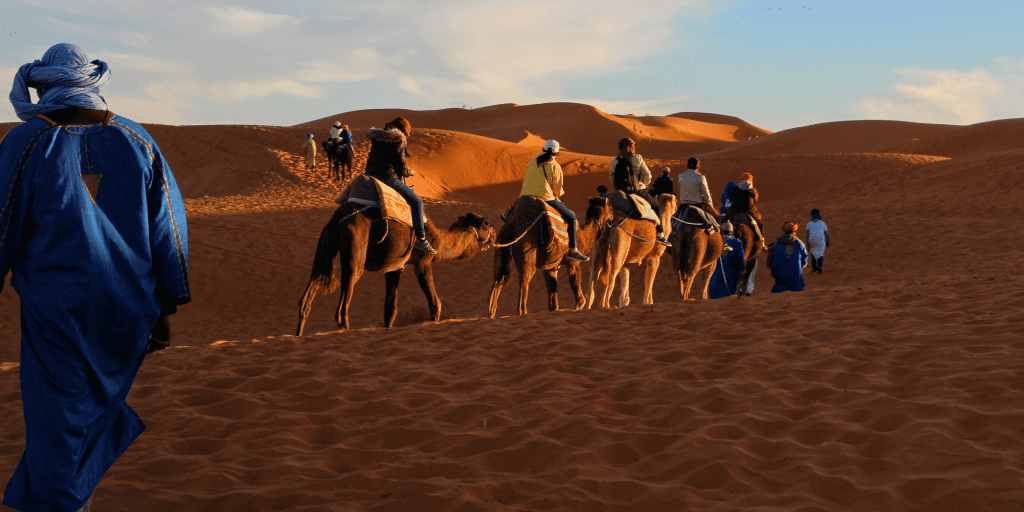
These interactions become memories inscribed in your portfolio, whether you decide to ride camels over the dunes to capture the adventure from a fresh viewpoint or photograph them as they travel the desert in the distance.
Photographing in the Sahara allows you to play with silhouettes and shadows. As the sun casts its long shadows over the dunes, you have the chance to create evocative and artistic compositions.
The stark contrast between light and shadow can result in striking visual narratives that convey the desert’s rugged beauty.
The Sahara is a photographer’s dream, providing a wide variety of possibilities to document its always shifting hues, spectacular scenery, and the hardy life that persists despite its hardships.
The Sahara offers countless opportunities for capturing unique photos, whether you are drawn to the vivid colors of the sand, the magnificent lighting during dawn and sunset, or the presence of camels and their elegant motions. Pack your photographic gear and travel to this breathtaking desert to capture its unmatched beauty, which is revealed in new ways with each click of the shutter.
2: The Blue of Chefchaouen.
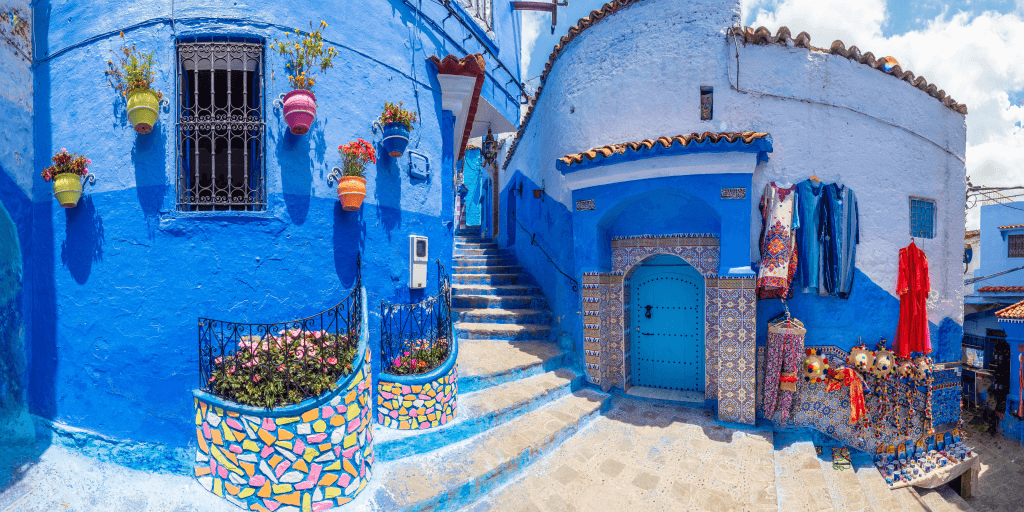
Chefchaouen, a little town in Morocco that has won the hearts of tourists from all over the world, is tucked away amid the untamed scenery of the Rif Mountains. Chefchaouen, sometimes referred to as the “blue city” or the “blue pearl” of Morocco, is distinguished from other tourist hotspots by its singular and hypnotic allure.
The defining feature of Chefchaouen is its enchanting blue buildings that cascade down the hillside, creating a breathtaking patchwork of blues that seems almost otherworldly. From the moment you set foot in this picturesque town, you are greeted by a sea of blues – light blue, bold dark blue, royal blue, and every shade in between. Each corner you turn reveals a new and captivating scene, brimming with serenity and adorned with intricate details that add to its allure.

One of the most remarkable aspects of Chefchaouen is the way the city transforms with the changing sunlight. Throughout the day, you’ll have numerous opportunities to capture the city’s beauty as the sun bathes it in different hues. Whether it’s the soft morning light casting a gentle glow or the warm afternoon sun enhancing the vividness of the blue facades, Chefchaouen is a photographer’s paradise.
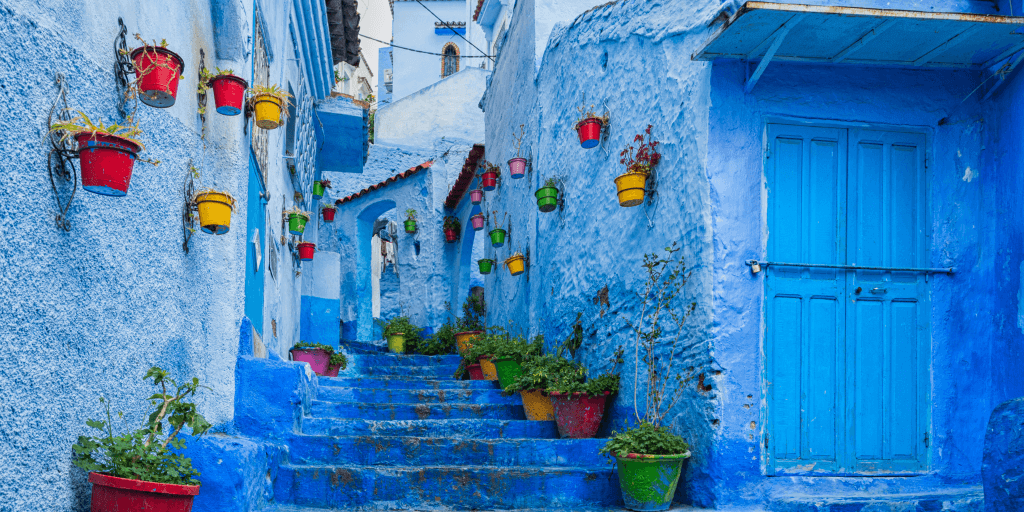
While Chefchaouen is steadily gaining popularity as a tourist destination, there’s still a chance to experience its tranquility and authenticity. To truly savor the essence of this magical town, consider waking up early and wandering its streets when they are mostly empty or populated only by the locals going about their daily routines.
The compact size of Chefchaouen makes it an ideal place to explore on foot. You can meander through its enchanting alleyways at your own pace, allowing yourself to get lost in the maze of cobalt-hued streets. As you wander aimlessly, you’ll stumble upon vibrant artisanal crafts that stand out vividly against the blue backdrop, making for exquisite souvenirs and unforgettable memories.
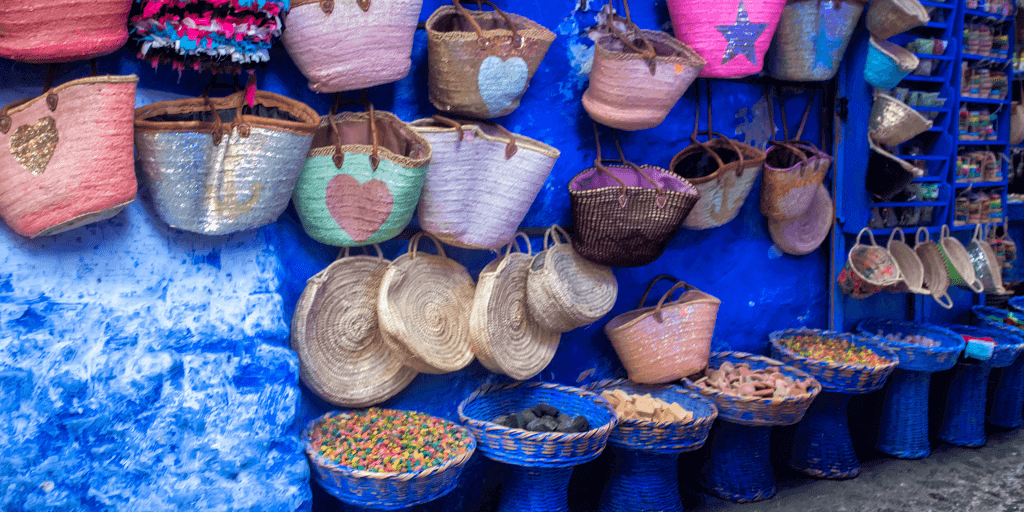
For those who seek a higher perspective and a glimpse of nature’s beauty, the surrounding Rif Mountains offer a perfect escape from the town. Take the time to venture beyond Chefchaouen’s limits, and you’ll be rewarded with breathtaking views of the town from elevated vantage points.
3: The Coastal City of Essaouira.

Tucked away along Morocco’s enchanting Atlantic coast lies a lesser-known treasure waiting to be discovered – the coastal city of Essaouira. With its charming blue and white buildings, this serene town has become a haven of tranquility, attracting both tourists and locals seeking respite from the bustling world.
While Essaouira has garnered recognition as a premier destination for surfers and windsurfing enthusiasts, its allure extends far beyond its waves. The natural beauty of this coastal gem is a photographer’s dream, offering endless opportunities to capture its breathtaking vistas. Stretching for miles, the ocean waves mirror the ancient ramparts that grace the sandy shores in between, creating a picturesque canvas that begs to be immortalized through the lens of a camera.
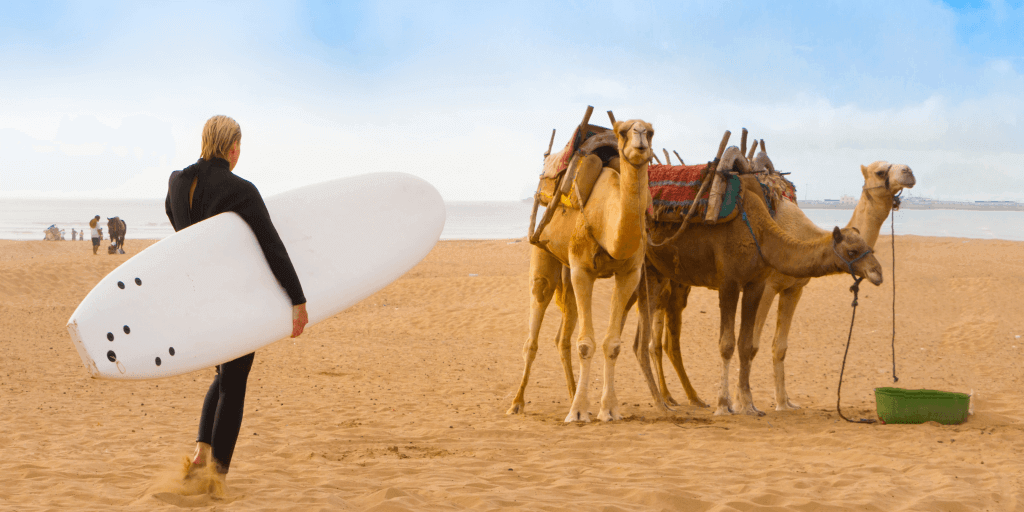
Exploring the cobblestone streets of the old city, you’ll encounter scenes that evoke a sense of timeless charm. The interplay of light and shadow in these narrow alleys adds depth and character to your photographs, making every corner a potential masterpiece. As the day draws to a close, be sure to capture the mesmerizing sunsets that grace the horizon over the tranquil waters, painting the sky with a kaleidoscope of hues.
Among the most iconic images that Essaouira offers is the sight of vibrant blue fishing boats neatly aligned in the bustling port. These boats, adorned with their distinctive color, create a vivid contrast against the backdrop of the sea, making for captivating compositions. Keep a keen eye out for the agile seagulls that gracefully swoop and dive, adding dynamic elements to your frames.
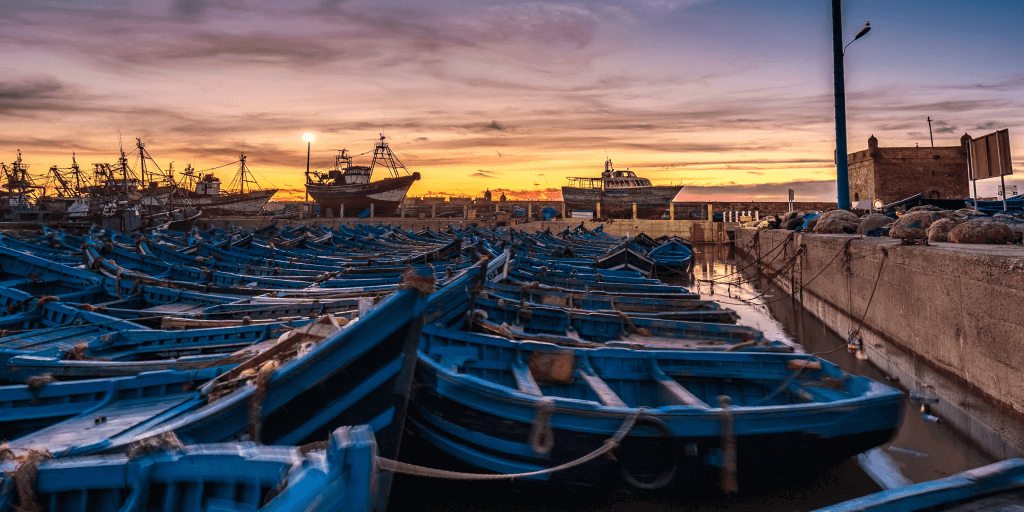
Essaouira is a seaside gem that melds rich cultural diversity with unmatched natural beauty. Essaouira welcomes you with open arms whether you’re an adventurer looking for the rush of the waves, an ardent photographer looking for the ideal view, or just a visitor wanting for a peaceful getaway. Its gorgeous surroundings and calm atmosphere make it a place that sticks in your memory long after you’ve said goodbye, making you yearn to visit its placid shores once more.
4: Marrakech by Day and Night: A Photographer’s Paradise.

Intricately blending culture, history, and natural beauty, Marrakech, the energetic center of Morocco, provides a truly unforgettable experience. Marrakech is a city that provides a wealth of photography chances throughout the day and at night, whether you’re a professional photographer or just someone who enjoys capturing rare moments.
- The Majorelle Garden: A Daytime Oasis.
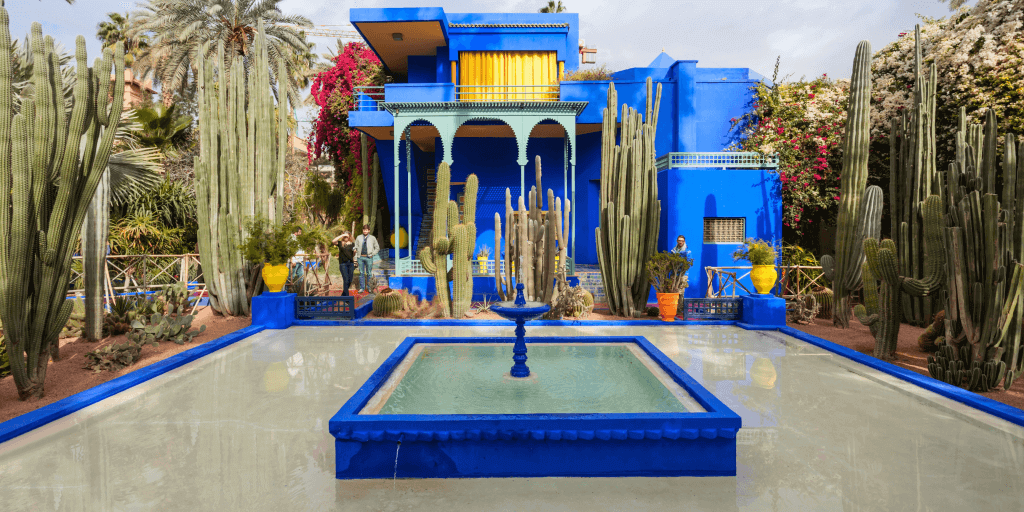
Begin your photographic journey in Marrakech by exploring the enchanting Jardin Majorelle, often referred to as the Majorelle Garden. This historical oasis provides a serene escape from the bustling red cityscape of Marrakech. Lush greenery, vibrant blooms, and serene water features create a visual feast for your camera.
Designed by the French artist Jacques Majorelle and later lovingly restored by the iconic Yves Saint Laurent, this garden is a harmonious fusion of art and nature. As you wander through this verdant paradise, you’ll encounter a museum dedicated to Berber art and culture, further enriching your photographic experience.
The garden’s aesthetic is a captivating blend of colors, with vibrant shades adorning the buildings, walls, flora, and tiles. Every corner is a potential masterpiece waiting to be captured by your camera. Whether you’re a seasoned photographer or a casual traveler, the Majorelle Garden promises an array of photographic delights.
- Jemma El Fna by Night: A Nighttime Spectacle.
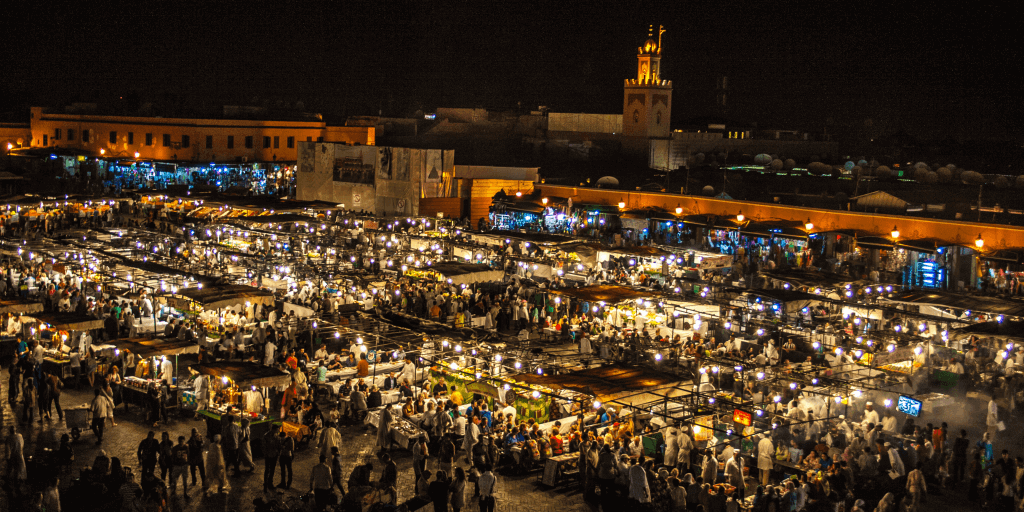
As the sun sets over Marrakech, a new realm of photographic opportunities emerges. Jemma El Fna, the city’s central square, transforms into a mesmerizing tapestry of lights, smoke, and life after dark. To capture this captivating nocturnal scene, consider ascending to one of the surrounding rooftop vantage points.
To make the most of the low lighting conditions, bringing a small tripod is advisable. From this elevated perspective, you can document the dynamic interplay of bustling activity in the square while enjoying the tranquil ambiance of a quaint café.
Jemma El Fna by night is a testament to the city’s vitality and the cultural richness that thrives within its streets. It’s an experience that, when captured through the lens, allows you to relive the liveliness and charm of Marrakech whenever you revisit your photographs.
Photography Essentials.
Before embarking on your Marrakech adventure, ensure you have the right camera equipment to capture these memorable scenes. While many travelers are not professional photographers, they often find themselves sifting through thousands of photos, each one a cherished memory of their Moroccan journey.
Remember to be mindful of local customs and good photo etiquette in Morocco to ensure a respectful and enjoyable experience for both you and the locals you encounter on your photographic journey.
5: The Fes Medina.

A photographer’s paradise may be found in Morocco’s historic city of Fes. It has the biggest medina (old walled city) in the world and attracts photographers from all over the world with its alluring combination of history, culture, and natural grandeur.
- Spices and Souks: A Feast for the Senses.
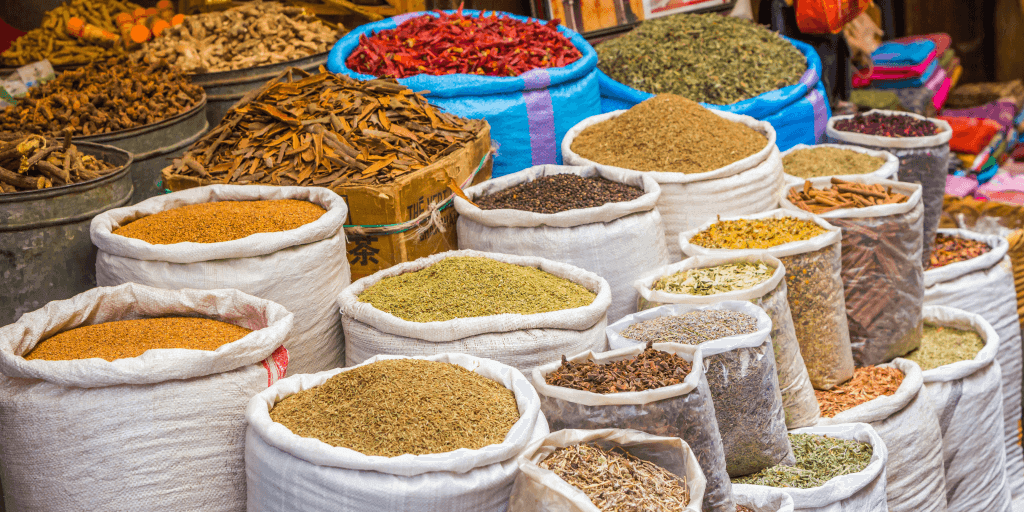
Wandering through the labyrinthine souks of Fes is a sensory journey that provides countless opportunities for stunning photography. Amidst the bustling markets, it’s common to see visitors pausing to capture images of meticulously arranged bags of vibrant spices. The rich autumnal hues of these spices juxtaposed against the azure blue bags create a visual masterpiece. One can’t help but wonder how these finely crafted peaks of spices remain so perfectly formed.
Beyond spices, Fes’ open markets offer an array of goods and products rarely found at home. The mere placement and presentation of dried foods, nuts, and spices are picturesque in their own right. Amid the vibrant chaos of the markets, take a moment to savor a cup of tea in one of the carpet houses.
- Artistry in Carpets: A Photographer’s Delight.
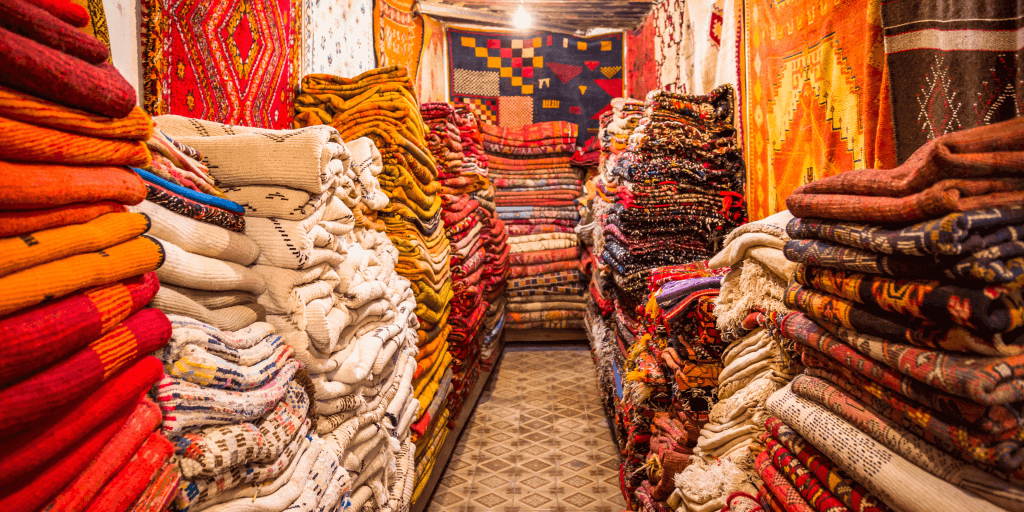
Prepare to be entranced by the handcrafted carpets of Fes. The meticulous attention to detail, the harmonious blend of colors, and the diversity of designs make these carpets irresistible to any photographer. Each carpet tells a story, a piece of Moroccan heritage woven into every thread. Whether capturing the intricacies of a Berber design or the vibrant geometry of a traditional Moroccan carpet, these creations are a visual symphony.
- Winding Alleys and Play of Shadows: Finding Beauty in the Ordinary.
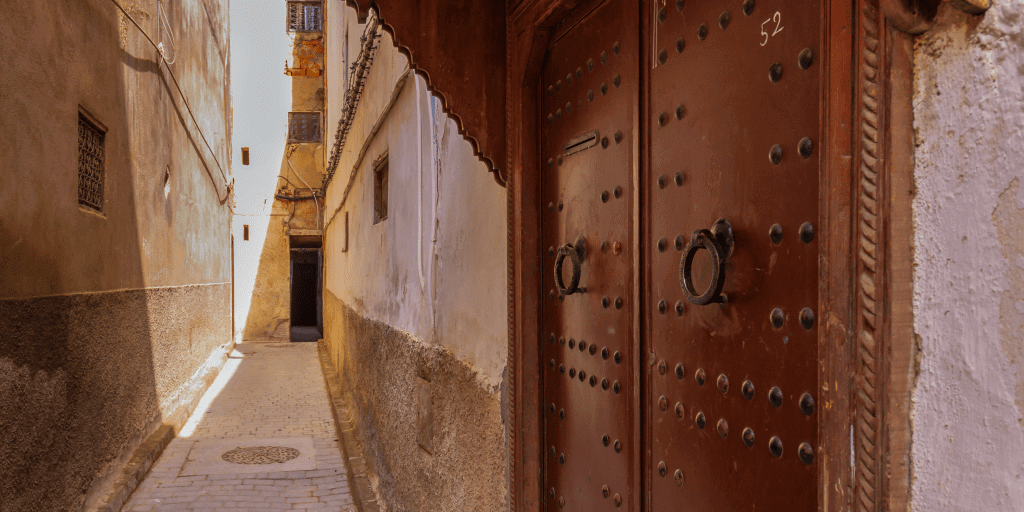
After spending a decade in the heart of Fes, I discovered that even the most common features of the city’s architecture can become extraordinary through the lens of a camera. The winding alleys, adorned with centuries-old arches and doorways, offer a mesmerizing interplay of light and shadow. Timing is key; waiting for that perfect lighting moment can result in captivating photographs that reveal the complexity of Fes’ urban design.
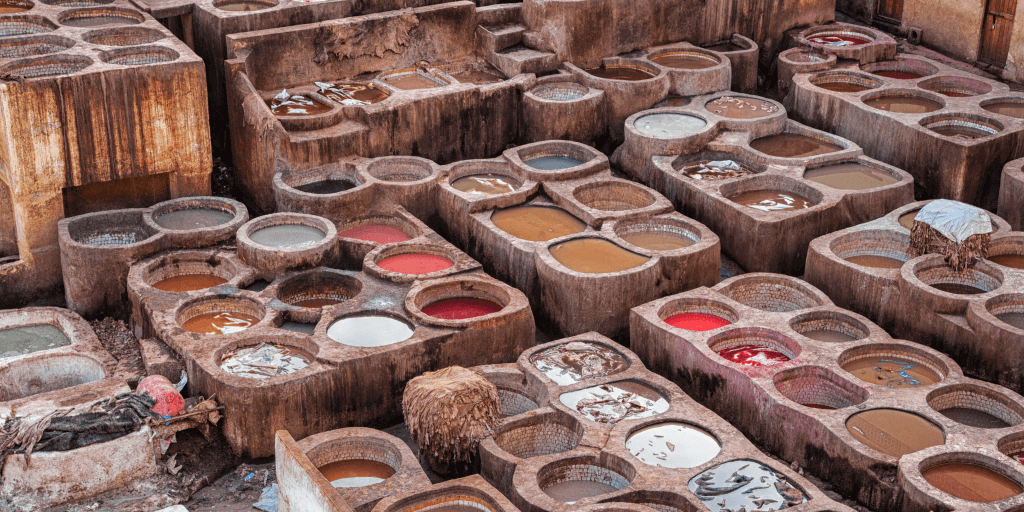
Moreover, Fes surprises you with hidden gems in the most ordinary places. Ancient water clocks and intricately tiled fountains can be found tucked away in the corners of the medina. It’s a testament to the city’s rich history, where beauty resides in the smallest moments of everyday life.
6: Ait Benhaddou: A Photographic Journey Through Time.

Nestled within the rugged grandeur of the Atlas Mountains, Ait Benhaddou emerges as a testament to Morocco’s rich history and captivating architecture. This fortified village, adorned with well-preserved kasbahs and mud-brick structures, has earned its place as a UNESCO World Heritage site and remains an irresistible draw for photographers seeking to capture its timeless beauty.
Ait Benhaddou possesses a unique allure, often described as a place frozen in time. It’s no wonder that countless movies have chosen this location as their backdrop, for it exudes the very essence of the Morocco depicted in classic films. The cliff-side houses, perched amidst high-altitude mountains, create a dramatic and picturesque landscape that beckons photographers from around the world.
- The Iconic Shot: Capturing Ait Benhaddou from Above.
For photographers, the quintessential shot of Ait Benhaddou is the one captured from the elevated road leading into the village. This vantage point offers a sweeping panorama of the kasbahs, with the Atlas Mountains as a breathtaking backdrop. The play of light and shadow on the ancient structures during different times of the day adds depth and character to your photographs, ensuring that each shot is a masterpiece.
- Exploring the Heart of Ait Benhaddou: Street Scenes and Architecture.
However, Ait Benhaddou’s photographic treasures extend beyond the classic shot. Venture into the heart of the village and you’ll discover a world of captivating street scenes and ancient architecture waiting to be documented. As you wander through the narrow, winding streets, you’ll find endless opportunities to capture the essence of daily life and the intricate details of mud-brick buildings.
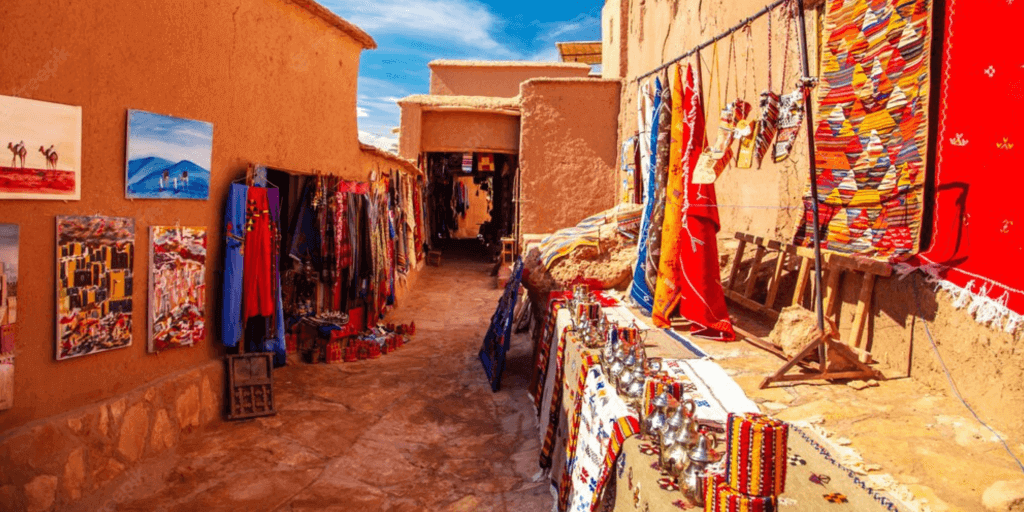
- The Ascent to the Summit: A Unique Perspective.
For those seeking a more adventurous photography experience, consider the climb to the summit of Ait Benhaddou. While it offers a unique perspective of the village, it’s essential to note that from this height, the village itself becomes less visible. Therefore, if your goal is to capture the village’s charm and character, the road leading into Ait Benhaddou remains the preferred location.
7: Capturing the Essence of Casablanca Through Photography.
Casablanca, Morocco’s bustling commercial centre and the country’s largest city, provides a plethora of photography options for anyone seeking to explore its dynamic combination of heritage and technology. Casablanca, with its rich cultural past and international flare, provides a tapestry of sights just asking to be caught via the lens.
- The Grand Hassan II Mosque: An Architectural Marvel
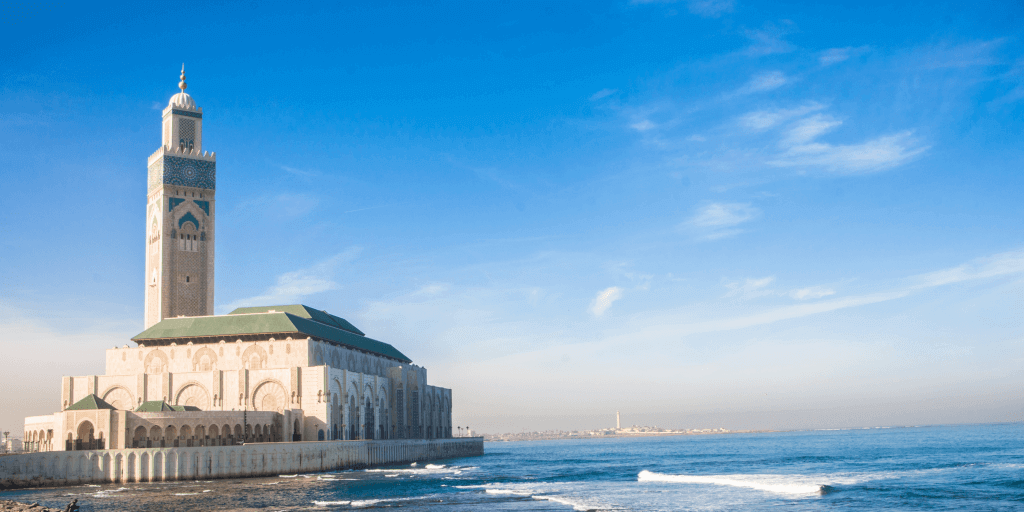
A true masterpiece of Moroccan architecture, the Hassan II Mosque is an iconic subject for photographers. This colossal mosque, with its towering minaret, sits at the edge of the Atlantic Ocean, creating a striking juxtaposition of ancient design and the vast sea. At sunset or sunrise, the mosque’s intricate details and the interplay of light and shadow make for unforgettable photographs.
- The Medina: A Glimpse of Authenticity.
While Casablanca is often associated with modernity, its medina (old town) is a treasure trove for photographers seeking authentic Moroccan scenes. Wandering through the narrow alleyways, you’ll encounter vibrant markets, street vendors, and the rich textures of ancient architecture. Capture the essence of daily life as locals go about their routines amidst the backdrop of centuries-old buildings.
Tips for Authentic Moroccan Photography.
1: Always Seek Permission.
Respect for individuals’ privacy is paramount. Before taking a photograph of anyone, it is customary to ask for their consent. Language barriers may exist, but a polite gesture, such as pointing to your camera or using your eyes to express your intention, is often sufficient.
The common response is a nod or a shake of the head to indicate permission or refusal. Respect their decision wholeheartedly. If they agree, consider showing your appreciation, perhaps even with a small tip, guided by local customs.
2: Establish a Connection.
Photography can be a bridge to meaningful interactions. Instead of discreetly taking pictures from afar, take the time to engage with your subjects. Strike up a conversation, even if it’s limited by language barriers.
A warm smile transcends words and can lead to unexpected friendships. Understanding the person you are photographing adds depth and meaning to your images, making them memorable.
3: Share Your Work.
Inviting your subjects to view the photographs you’ve taken can create moments of joy and excitement, particularly when photographing children.
Witnessing their laughter and reactions can be a rewarding experience. If you have a Polaroid camera, consider giving away instant prints as a thoughtful gesture, fostering goodwill and lasting memories.

4: Demonstrate Sensitivity.
It is essential to respect local customs and cultural practices. Keep religious celebrations, processions, and private occasions in mind. It is critical not to photograph individuals in delicate occasions, such as funerals or times of grief.
Always evaluate how you would like to be treated in a comparable scenario and put yourself in the position of the locals.
5: Follow the Rules.
Many cultural and religious sites in Morocco have restrictions on photography. Always be vigilant for signs prohibiting photography, especially in places like mosques, churches, and museums. Flash photography is typically prohibited in such locations.
Drones are rarely allowed indoors or in certain public areas. Check in advance and ask for guidance if unsure about specific photography regulations.
6: Be Unobtrusive.
While capturing the daily life of Moroccans can be fascinating, it’s important not to disrupt their routines. Avoid being a nuisance by respecting personal space and not intruding on private moments.
Blend into the environment and capture the authenticity of everyday life without drawing unwanted attention.
Because photography is all about capturing the spirit and reality of a moment, if you follow these guidelines, you’ll have the best chance of realizing your vacation photography ambitions!






